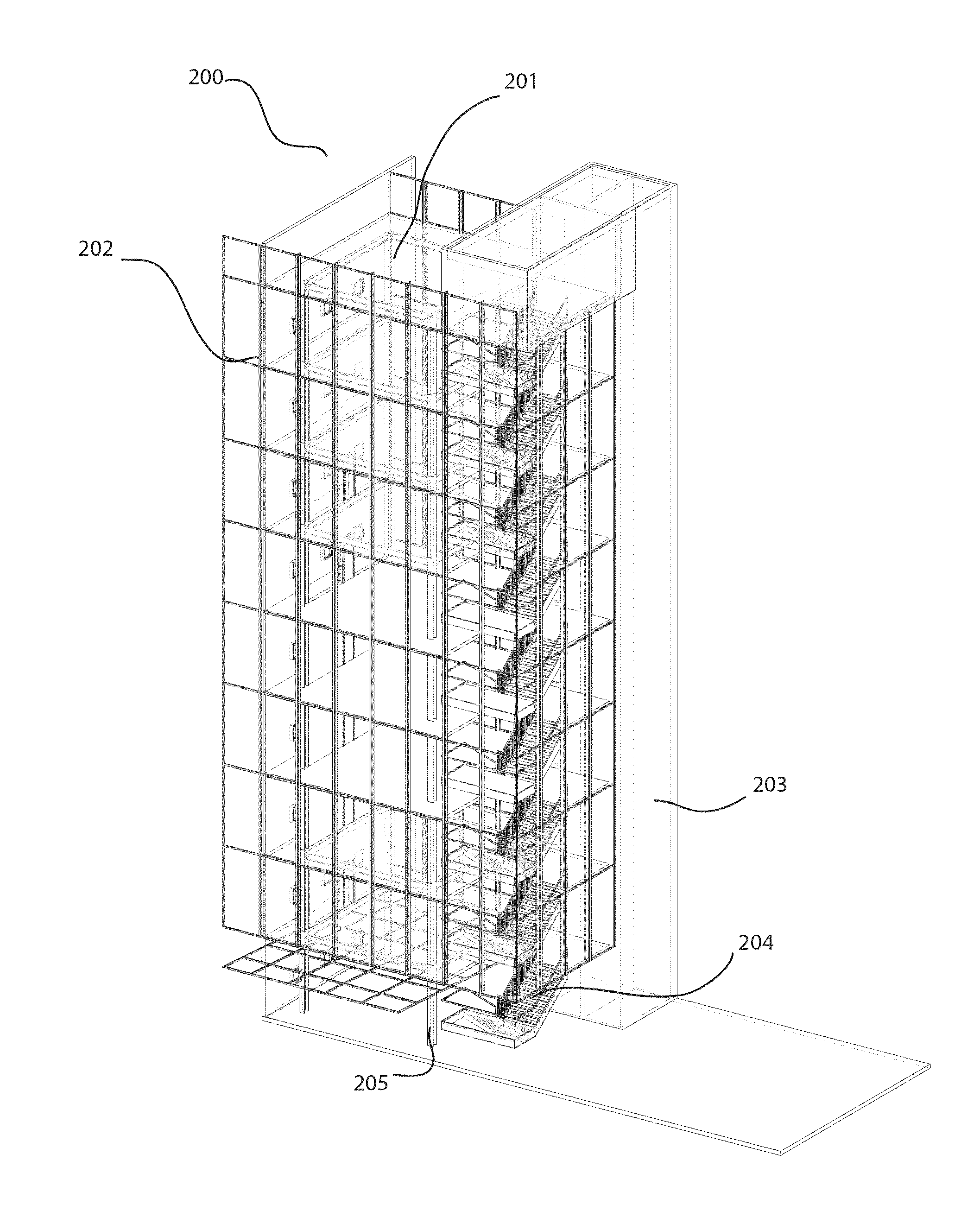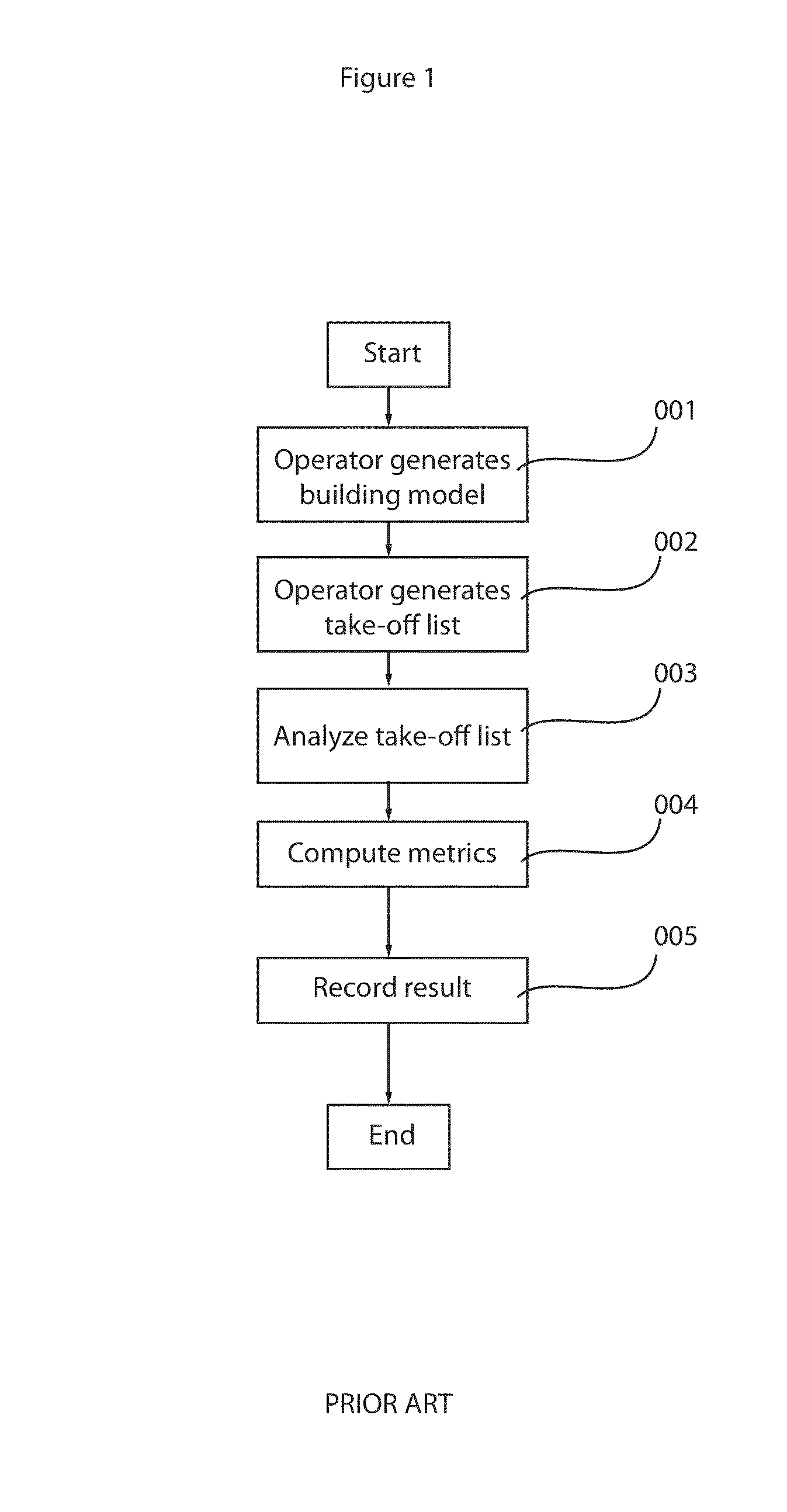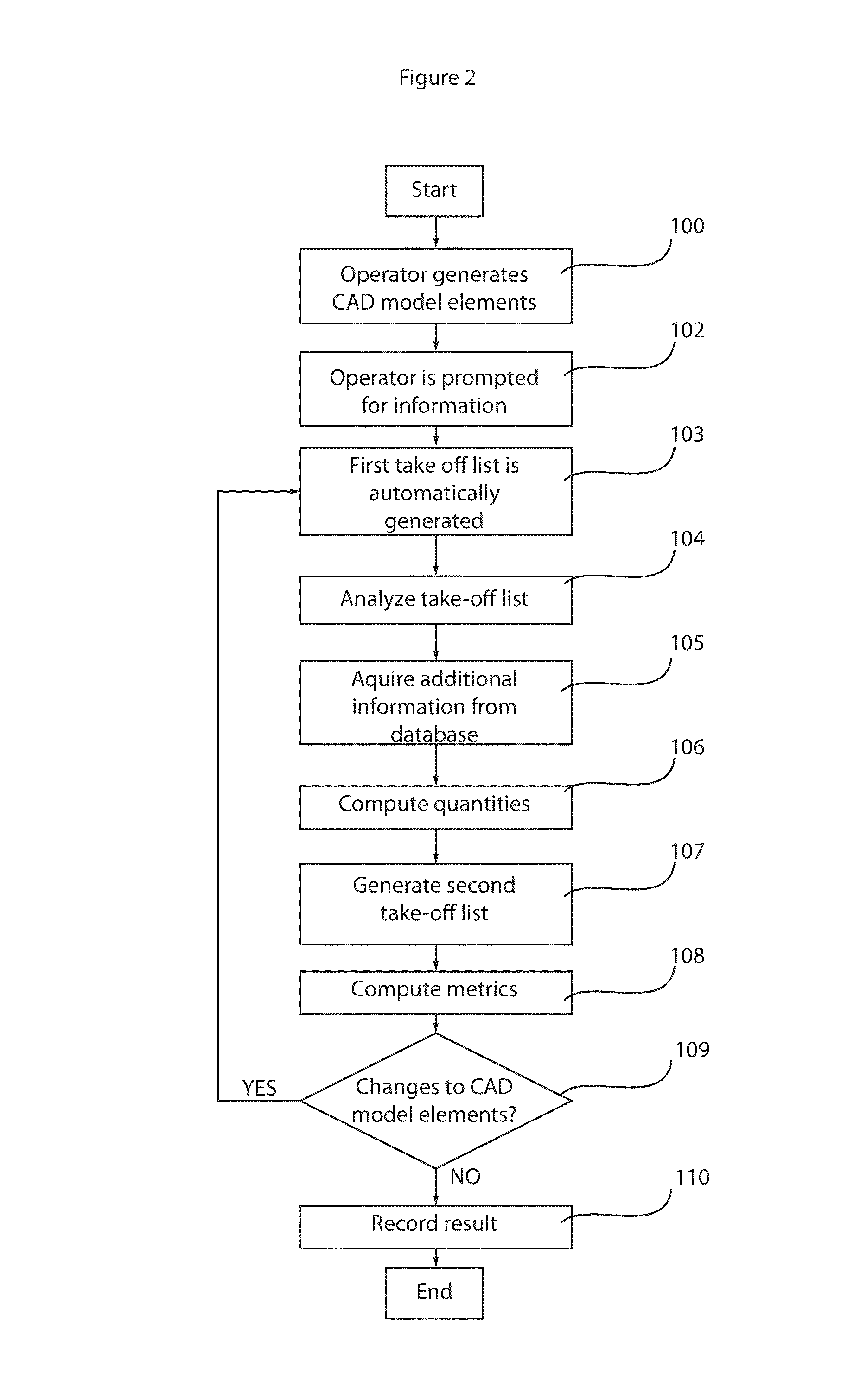Method for real time estimation of embodied environmental impact in a building design
- Summary
- Abstract
- Description
- Claims
- Application Information
AI Technical Summary
Benefits of technology
Problems solved by technology
Method used
Image
Examples
Embodiment Construction
[0029]Several embodiments of methods which translate a building model into a suitable take-off list for material classification in real time are disclosed. Take-off tools are generally used to gather input data in the form of a take-off list. The take-off list also includes identifiers for objects in the model, such as the material name or take-off metric, an identifier used to indicate how a material is applied spatially within the model. In one embodiment, the take-off metric is used to indicate whether a material is applied on an area basis or a volumetric basis. This distinction is useful when applying the method to building models containing coatings, thin sheet materials, and other layers modeled without thickness. Depending on the take-off metric, different standardized take-off formulas are used to gather and calculate data based on the physical element metrics. These take-off formulas may comprise correction factors. Other embodiments make use of the data provided in a take...
PUM
 Login to View More
Login to View More Abstract
Description
Claims
Application Information
 Login to View More
Login to View More - R&D
- Intellectual Property
- Life Sciences
- Materials
- Tech Scout
- Unparalleled Data Quality
- Higher Quality Content
- 60% Fewer Hallucinations
Browse by: Latest US Patents, China's latest patents, Technical Efficacy Thesaurus, Application Domain, Technology Topic, Popular Technical Reports.
© 2025 PatSnap. All rights reserved.Legal|Privacy policy|Modern Slavery Act Transparency Statement|Sitemap|About US| Contact US: help@patsnap.com



